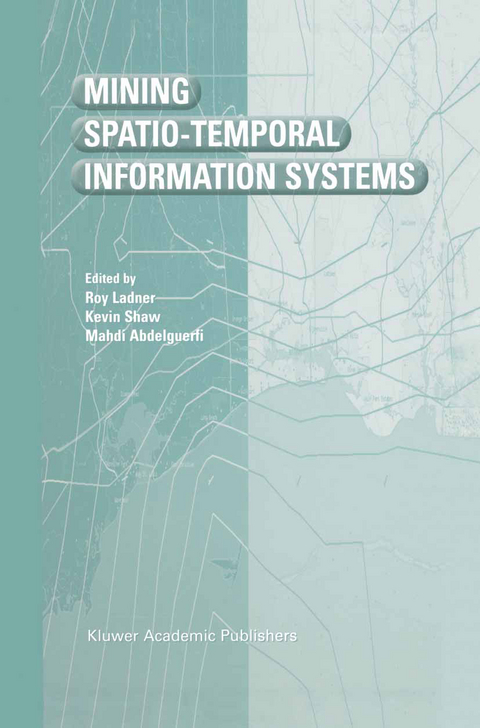
Mining Spatio-Temporal Information Systems
Springer-Verlag New York Inc.
978-1-4613-5416-1 (ISBN)
Mining Spatio-Temporal Information Systems is structured to meet the needs of practitioners and researchers in industry and graduate-level students in Computer Science.
1: Spatio-Temporal Data Mining and Knowledge Discovery: Issues Overview.- 1. Introduction.- 2. Background.- 3. Data.- 4. Data Issues.- 5. Conclusions.- 2: Indexing of Objects on the Move.- 1. Introduction.- 2. Problem Statement and Related Work.- 3. The TPR-Tree.- 4. The REXP-Tree.- 5. Summary of Performance Experiments.- 6. Conclusions.- 3: Efficient Storage of Large Volume Spatial and Temporal Point-Data in an Object-Oriented Database.- 1. Introduction.- 2. The GIDB System.- 3. The Problem Domain.- 4. An Object-Oriented Solution.- 5. Requirements.- 6. Towards a Solution.- 7. The Design.- 8. A Flexible Framework.- 9. Sample Applications.- 10. Evaluation.- 11. Future Developments.- 12. Conclusions.- 4: A Typology of Spatiotemporal Information Queries.- 1. Introduction.- 2. Spatiotemporal Information for the Dynamic World.- 3. A Typology of Spatiotemporal Queries.- 4. Conclusions.- 5: Visual Query of Time-Dependent 3D Weather in a Global Geospatial Environment.- 1. Introduction.- 2. 4D Data Model for the Visual Earth.- 3. Scalable, Hierarchical 3D Data Structure.- 4. Interactive, Accurate Visualization of Nonuniform Data.- 6: STQL — A Spatio-Temporal Query Language.- 1. Introduction.- 2. Related Work.- 3. The Data Model.- 4. Querying with Spatio-Temporal Operations.- 5. Visual Querying.- 6. Conclusions.- 7: Tripod: A Spatio-Historical Object Database System.- 1. Introduction.- 2. Case Study: UK National Land Use Database.- 3. The Tripod Object Model.- 4. Architecture.- 5. Related Work.- 6. Conclusions.- 8: Spatio-Temporal Subgroup Discovery.- 1. Introduction: Spatial Subgroup Mining.- 2. Application Example.- 3. Representation of Spatio-Temporal Data and of Spatial Subgroups.- 4. Spatio-Temporal Analyses.- 5. Database Integration.- 6. Conclusions and Future Work.
| Reihe/Serie | The Springer International Series in Engineering and Computer Science ; 699 |
|---|---|
| Zusatzinfo | X, 170 p. |
| Verlagsort | New York, NY |
| Sprache | englisch |
| Maße | 155 x 235 mm |
| Themenwelt | Informatik ► Datenbanken ► Data Warehouse / Data Mining |
| Informatik ► Theorie / Studium ► Algorithmen | |
| Naturwissenschaften ► Geowissenschaften ► Geografie / Kartografie | |
| ISBN-10 | 1-4613-5416-1 / 1461354161 |
| ISBN-13 | 978-1-4613-5416-1 / 9781461354161 |
| Zustand | Neuware |
| Haben Sie eine Frage zum Produkt? |
aus dem Bereich


